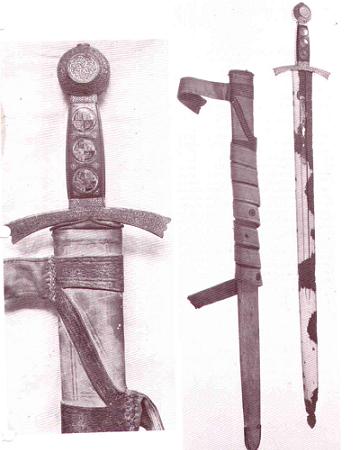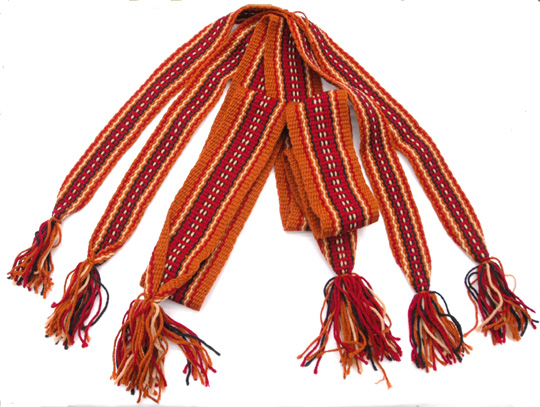Posts: 5,981 Location: Birmingham, Alabama
Thu 16 Jul, 2009 1:16 pm
"Galloon" Sword Belt of Sancho IV
One of the late 13th c. tomb swords in ROTMS (sword of Sancho IV of Castille) has a scabbard with an interesting and relatively simple suspension. The scabbard attachment consists of two broad bands of leather joined by a separate, diagonal band of leather that keeps the other bands separated. The textile belt is attached to the bands by coarse stitching. There appears to be a small slit in the scabbard covering near the edge of the lower band, but the photo isn't clear. This appears to be a much simpler suspension than the complex arrangement of split belts and slits in the scabbard covering I tend to associate with scabbards of the period. I might try this with my Type XIV project, but I don't know where to find a textile belt.
The belt is described as "galloon," which is a woven, patterned material. Does anybody know of a modern equivalent suitable for this application? In theory, I suppose one could approximate the Sancho IV belt by making a long tube of heavyweight linen or cotton, pressing it flat and applying silk ribbon edging. It would be better, obviously, to have a purpose-made fabric belt of usual construction. Maybe a 2" wide cotton web belt? What about an appropriate buckle and strap end for this type of belt?
 Attachment: 21.51 KB
Attachment: 21.51 KB


